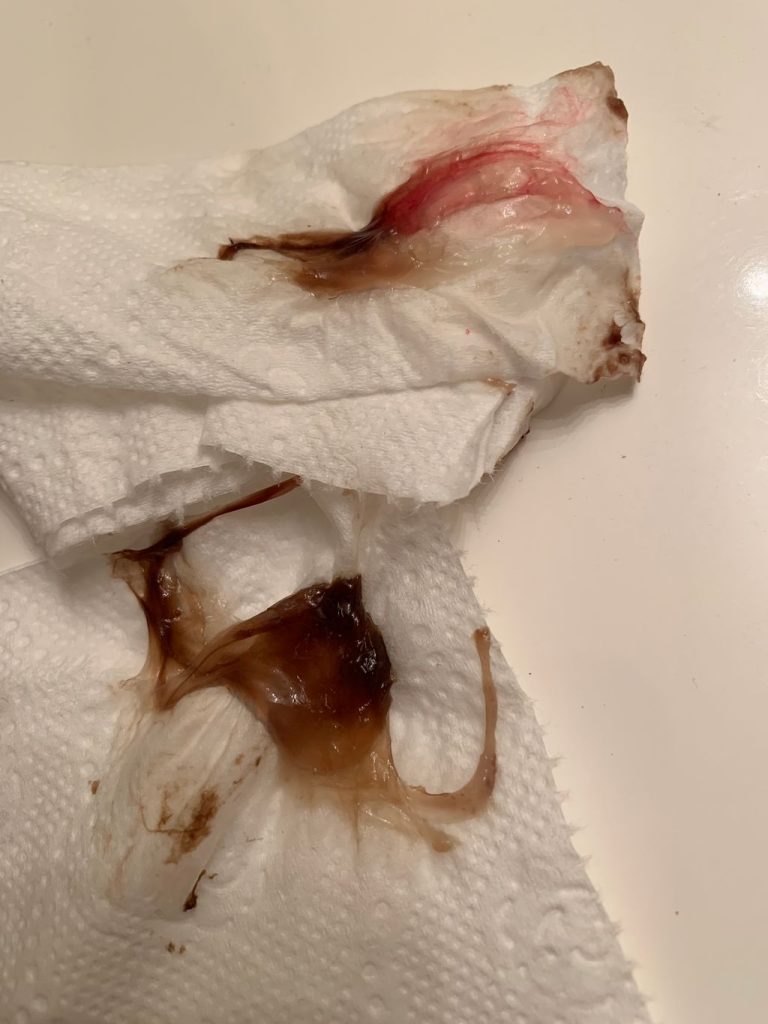Vaginal Bleeding While Pregnant
Published (updated: ).
Vaginal bleeding during pregnancy is any discharge of blood from the vagina. It can happen any time from conception (when the egg is fertilized) to the end of pregnancy.
Some women have vaginal bleeding during their first 20 weeks of pregnancy. Spotting is when the patient notices a few drops of blood every now and then on their underwear. It is not enough to cover a panty liner.
Bleeding is a heavier flow of blood. With bleeding, the patient will need a liner or pad to keep the blood from soaking their clothes. Some spotting is normal very early in pregnancy. If the patient has had an ultrasound that confirms a normal pregnancy, the patient should report the finding to their obstetrician the first day where spotting is seen.
Spotting can be a sign of a pregnancy where the fertilized egg develops outside the uterus (ectopic pregnancy). An untreated ectopic pregnancy can be life-threatening for the patient.
It could just be the mucous plug

The presentation of the mucous plug also known as the ‘bloody show’ is an indication that labor is in progress and delivery may be imminent. Any other bleeding than the bloody show should be treated as a serious emergency.
Assessment and management of vaginal bleeding during pregnancy
Initial management of all patients should be guided by the primary survey. After the primary survey, a focused history and physical exam may reveal a history of pregnancy, spotting, and/or bleeding. While spotting is probably normal during pregnancy, frank bleeding is not. This could be an indication of 2 serious conditions that can affect the life of the mother or fetus:
- Abruptio placenta – This painful bleeding condition is caused by the placenta being ripped away from the uterine wall. The mother could easily bleed to death. The fetus is not getting any oxygen through the placenta that was torn from the uterine wall. A true emergency.
- Placenta previa – This painless bleeding is primarily bad for the fetus. The placenta has torn, usually due to it’s placement on the uterine wall and the force of contractions. A true emergency.
Bleeding can be managed by applying a pad to the vagina and applying direct pressure. This measure is intended to stop the flow of blood after the blood fills the birth canal. Treat for shock by administering oxygen, elevating the feet if possible, and preventing heat loss with a blanket. If the bleeding is more like spotting, a trauma pad or sanitary napkin can be placed at the entrance of the vagina. If pads are being used, the medics should keep a count of how many pads were used to estimate blood loss.
